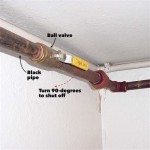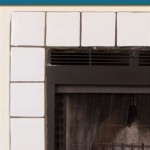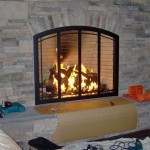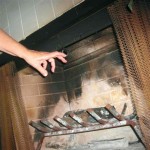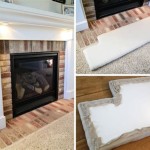Fireplace Log Cleaner: Maintaining Hearth Health and Aesthetics
A fireplace is a valued asset in many homes, providing warmth and ambiance. However, the use of firewood results in the accumulation of soot, creosote, and ash on fireplace logs, which can affect both the performance and appearance of the fire. Employing an appropriate fireplace log cleaner is necessary to maintain the efficiency, safety, and overall aesthetics of the fireplace. This article will explore the importance of cleaning fireplace logs, the types of cleaners available, and the proper methods for their application.
The accumulation of residue on fireplace logs is a natural consequence of burning wood. This residue not only detracts from the natural beauty of the wood but can also pose several risks. Creosote, a highly flammable byproduct of incomplete combustion, is a particular concern. Build-up of creosote in the chimney can significantly increase the risk of a chimney fire. Additionally, soot and ash accumulation can impact the log's ability to efficiently radiate heat, reducing the fireplace's overall warming capacity. Therefore, regular cleaning is vital for safety and optimal performance.
Key Point 1: Identifying the Need for Cleaning
Recognizing the signs indicating the need for fireplace log cleaning is the first step in maintaining a healthy fireplace. Visual inspection is crucial. A heavy accumulation of black, oily, or flaky residue on the logs is a clear indicator that cleaning is required. The presence of soot around the fireplace opening and on surrounding surfaces can also suggest that the logs need attention. The frequency of cleaning depends on the frequency of fireplace use and the type of wood burned. Burning softwood, which contains more sap, tends to produce more creosote than hardwood. Frequent users and those burning softwood may need to clean their logs more often – potentially after every few uses. Those who burn seasoned hardwood less frequently may find that cleaning once a month suffices.
Beyond visual cues, changes in the fireplace's performance can also signal the need for cleaning. If the fire is harder to start or maintain, or if it produces excessive smoke, the logs may be contributing to the problem due to accumulated residue hindering proper airflow and combustion. In extreme cases, heavy creosote buildup can even cause an unpleasant odor to emanate from the fireplace, even when it is not in use.
Regular inspection and attention to these warning signs will allow for timely intervention and prevent the build-up of excessive residue, preserving the fireplace's performance and safety.
Key Point 2: Types of Fireplace Log Cleaners
Various types of fireplace log cleaners are available, each with different compositions and application methods. The choice of cleaner depends on the type and extent of the residue, as well as personal preferences regarding environmental impact and ease of use.
Chemical Cleaners: These cleaners are often formulated with strong solvents and detergents designed to dissolve and remove soot, creosote, and ash. They can be highly effective, particularly for removing stubborn buildup. However, chemical cleaners can be harsh and may contain volatile organic compounds (VOCs) that can be harmful to human health and the environment. When using chemical cleaners, it is essential to follow the manufacturer's instructions carefully and to ensure adequate ventilation. Protective gear, such as gloves and eye protection, should also be worn. Some chemical cleaners are available in spray form, while others require mixing with water. The application method depends on the specific product.
Enzyme-Based Cleaners: Enzyme-based cleaners offer a more environmentally friendly alternative to chemical cleaners. These cleaners utilize enzymes to break down organic compounds in soot and creosote, facilitating their removal. They are generally less harsh than chemical cleaners and do not contain VOCs. However, enzyme-based cleaners may be less effective at removing heavy buildup and may require multiple applications. They are typically applied in a spray form and allowed to sit for a specified period before being wiped off.
DIY Solutions: Some homeowners prefer to use homemade cleaning solutions to clean their fireplace logs. Common DIY solutions include mixtures of water and vinegar, baking soda, or dish soap. These solutions are generally mild and may be suitable for removing light residue. However, they may not be effective at removing heavy creosote buildup. When using DIY solutions, it is important to test the solution on a small, inconspicuous area of the log first to ensure that it does not damage the finish. These solutions are commonly applied with a sponge or cloth.
Wire Brushes and Scrapers: Regardless of the cleaning solution used, a wire brush or scraper can be helpful for removing loose soot and ash. These tools are particularly effective for removing flaky creosote. When using a wire brush or scraper, it is important to exercise caution to avoid damaging the surface of the logs.
When selecting a fireplace log cleaner, it is crucial to carefully consider the pros and cons of each type and to choose a product that is appropriate for the specific needs of the fireplace and the user's preferences.
Key Point 3: Proper Cleaning Techniques
Applying the cleaning solution, whether purchased or homemade, requires careful attention to detail. Before beginning, it's paramount to ensure the fireplace is cold and all embers are completely extinguished. This prevents the risk of fire or burns during the cleaning process.
Preparation: Begin by removing any loose debris, such as ash and small pieces of wood, from the fireplace. Use a fireplace shovel and brush to sweep the debris into a metal container for safe disposal. Protect the surrounding area by laying down a drop cloth or old newspapers to prevent staining from the cleaning solution and removed soot.
Application: Follow the manufacturer's instructions for the specific cleaner being used. For spray-on cleaners, apply the solution evenly to the surface of the logs, ensuring that all areas are thoroughly coated. For cleaners that require dilution, mix the solution according to the manufacturer's instructions and apply it with a sponge or cloth. Avoid oversaturating the logs, as this can lead to prolonged drying times and potential damage to the wood.
Scrubbing: After allowing the cleaning solution to sit for the recommended time, use a wire brush or scraper to gently scrub the surface of the logs. Pay particular attention to areas with heavy buildup of soot and creosote. Avoid using excessive force, as this can damage the finish of the logs.
Rinsing: If the cleaning solution requires rinsing, use a damp cloth or sponge to remove any remaining residue. Be sure to wring out the cloth or sponge frequently to avoid re-depositing the residue back onto the logs. For cleaners that do not require rinsing, simply wipe the logs clean with a dry cloth.
Drying: Allow the logs to air dry completely before using the fireplace. This may take several hours or even overnight, depending on the humidity and temperature. To speed up the drying process, you can use a fan to circulate air around the fireplace.
Safety Precautions: Regardless of the cleaning method used, safety should always be the top priority. Wear appropriate protective gear, such as gloves and eye protection, to prevent contact with the cleaning solution and soot. Ensure adequate ventilation by opening windows and doors or using a fan to circulate air. Never mix different cleaning products, as this can create hazardous fumes. Always dispose of cleaning cloths and containers properly. By following these safety precautions, one can safely and effectively clean the fireplace logs and maintain a healthy and beautiful fireplace.
Regular maintenance, including cleaning, contributes significantly to the long-term function and safety of a fireplace. Proper cleaning techniques are essential for removing harmful residue and preserving the logs' appearance and thermal efficiency. By understanding the necessity of cleaning, the available cleaning options, and the safe methods for their use, homeowners can ensure that their fireplaces remain a source of warmth and enjoyment for years to come.

Creosote Sweeping Log Sl 824 The Home Depot

Safer To Get A Chimney Sweep Instead Of Using Log

Acs Gas Log Cleaner Removes Carbon And Soot From Fireplace Logs 1 Pint 16oz Spray Bottle Com

Imperial Creosote Sweeping Log In The Fireplace Maintenance Department At Com

Rutland Gas Fireplace Cleanup Kit With Log Soot Remover White Off Glass Cleaner Brick And Stove Bn02 The Home Depot

Rutland Gas Fireplace Cleanup Kit With Log Soot Remover White Off Glass Cleaner Brick And Stove Bn02 The Home Depot

Do Creosote Sweeping Logs Work Doctor Flue Inc

Why Is It Important To Get My Gas Fireplace Logs Clean Regularly

Csl Creosote Sweeping Log Chimney Cleaning Fire Place Safety

Rutland Gas Fireplace Cleanup Kit With Log Soot Remover White Off Glass Cleaner Brick And Stove Bn02 The Home Depot
Related Posts


